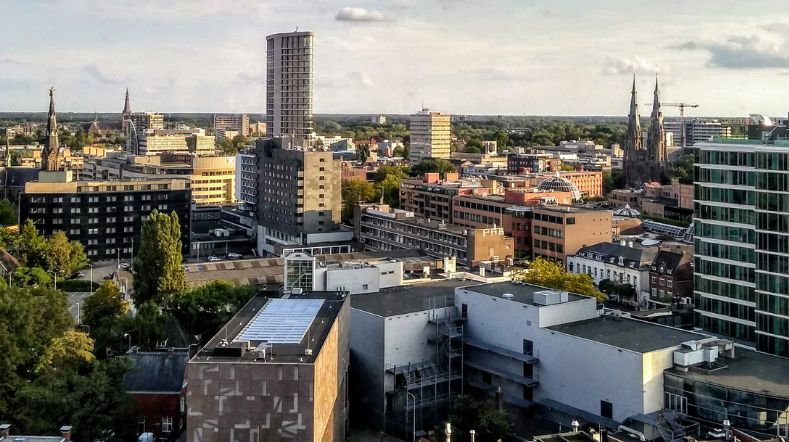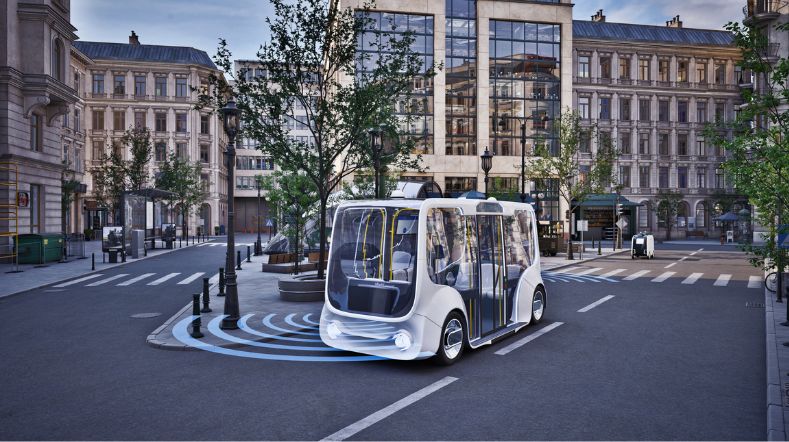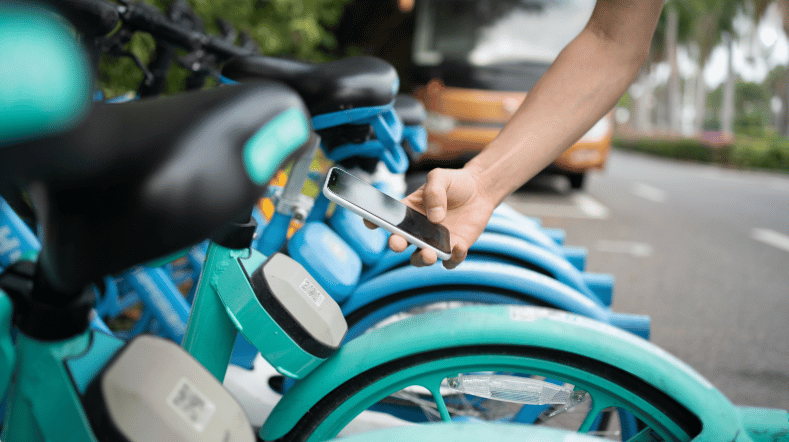
XCARCITY: effective digital twins for tomorrow’s low-traffic city
The sustainable accessibility of urban regions has come under threat from increasing pressure on scarce space. Low-traffic areas designed around smart mobility offer relief. But you need reliable planning models to determine which solutions are effective. With XCARCITY, TNO and more than 30 partners will develop realistic ‘digital twins’ for smart mobility applications, to make even better choices for tomorrow’s liveable city.
The United Nations expects the trend of urbanisation to continue worldwide. It is expected that by 2050, 68% of the world’s citizens will be living in cities. Pressure on the urban environment will therefore increase further, including in the Netherlands. Nearly a million new homes need to be built in the next 10 years, many of them in urban areas, where mobility problems are already visible. Maaike Snelder, Principal Scientist at TNO and associate professor at Delft University of Technology: ‘If you look at traffic jams, parking pressure in cities, and overcrowded public transport, you can see that our accessibility is clearly approaching its limits. With the greater concentration of living, working, leisure, and manufacturing, there’s an increasing need for smart mobility solutions, such as shared cars and hubs, to keep cities accessible and liveable.’
Not only popular measures are needed
However, reducing car use always proves a difficult task for cities. ‘The car also provides a lot of added value for people, such as convenience and freedom. Many people think it’s a cheap form of transport, and they often consider it their fundamental right. And problems don’t arise everywhere – far from it. Cities should focus on neighbourhoods with heavy traffic and look very specifically at alternatives that work for the different sub-target groups,’ says Snelder.
Policymakers who want to work with smart mobility often choose the popular route of introducing new alternatives, she observes. ‘At the same time, you’ll have to take measures that discourage car ownership and use, but these are obviously much less popular. They’re politically sensitive and depend on how the municipal council votes. You can, of course, design new neighbourhoods to be low-traffic from the start. For example, Merwede in Utrecht is even completely car-free. For existing neighbourhoods, this is much more difficult.’

‘What makes XCARCITY unique is that this project combines a data-driven approach with models, using AI and data assimilation and visualisation methods.’
Current models fall short
Current modelling tools are falling short in developing low-traffic cities. ‘Many models have been developed for the construction of new infrastructure projects, for road construction. These have expanded over the years to include public transport and cycling, but new mobility concepts such as shared cars and hubs are not yet included. Current models are also often far too slow to be used in the planning process,’ Snelder explains. The multi-year XCARCITY project is set to change this.
‘What makes XCARCITY unique is that this project combines a data-driven approach with models, using AI and data assimilation and visualisation methods. The digital twins that are used are based on realistic assumptions about the use of smart mobility services, drawn from pilot projects and real-world experiments, and virtual reality. The digital twins are designed to support shared decision-making. Indeed, that’s now the big challenge: you have to take so many different parties into account.’
Extensive experience with Urban Strategy
That is why 33 stakeholders are collaborating in XCARCITY. In addition to TNO, Delft University of Technology, Eindhoven University of Technology, and the University of Twente are also involved as knowledge partners.
TNO focuses on developing digital twins for planning issues. ‘With our Urban Strategy platform, we’ve already gained a lot of experience with interactive planning models. Together with the universities, we’re working on new advanced models for making low-traffic urban environments, which we can then integrate into Urban Strategy. During design sessions with policymakers, we’re already deploying these new models, so that we can design low-traffic areas together with all parties involved in this project: public authorities, area developers, and mobility and traffic service providers. This approach also gives us direct feedback from the field. We learn about these partner’s prerequisites and their business models – all of this has to be brought together.’
Advanced digital twins
In XCARCITY, the models are deliberately applied to three very different sample regions, with very specific characteristics and transport patterns. In Amsterdam, for example, all mobility is focused on the city centre; all traffic from the surrounding area travels to and from the city. In the Rotterdam-The Hague metropolitan region, on the contrary, there are many more journeys criss-crossing the region. Besides these existing urban areas, Almere-Pampus has been chosen as a new area to be developed.
The project will run for five years. Each year, the project team will take a first step towards the future mobility system for the three areas, based on the knowledge gained. The new insights will ultimately lead to the creation of increasingly sophisticated versions of the digital twins.
‘Collaboration of all stakeholders is crucial’
Asked about her personal motivation, Snelder replies: ‘I find it particularly fascinating to see how you can redesign the mobility system, and how this is then received and applied by all the stakeholders. In addition to that substantive challenge, I find it interesting to see how you can develop models and optimisation methods in such a way that you can properly answer these kinds of design questions. Finally, it’s especially exciting to make solutions work well for all target groups involved. That collaboration between policymakers, area planners, and market players will be crucial to making smart mobility work well in practice for urban accessibility.’
More about tomorrow's liveable city?
Read how we can ensure an accessible, resilient and liveable city without emissions, mobility poverty or unequal opportunities now and in the future.
Get inspired
Smarter and faster construction: TNO helps Eindhoven Metropolitan Region with historic leap of scale


Don't jump on every innovation bandwagon: TNO's framework to help cities make smarter mobility choices


Urban space


Zero emission urban mobility


How governments can make MaaS work to societal goals


